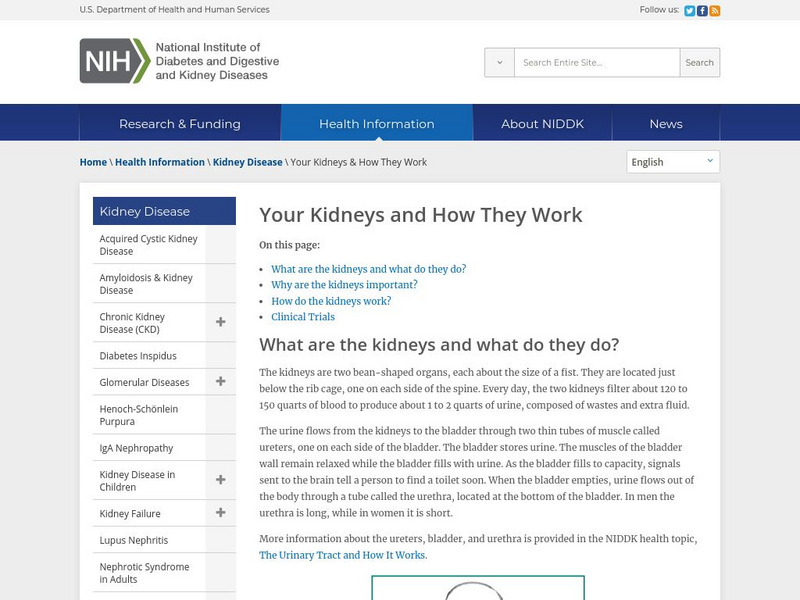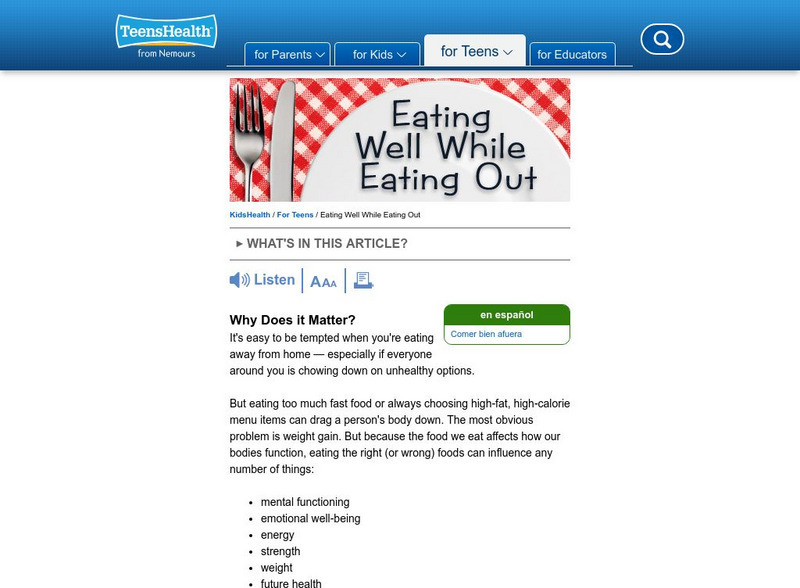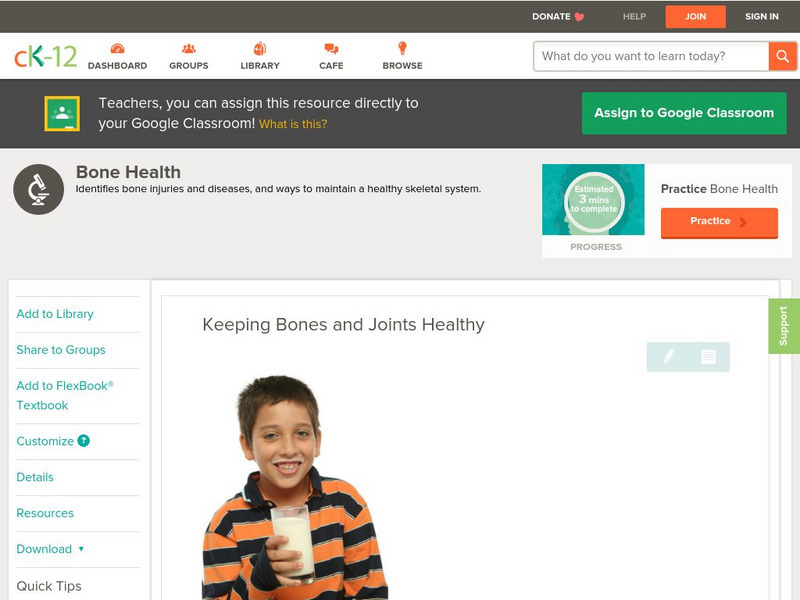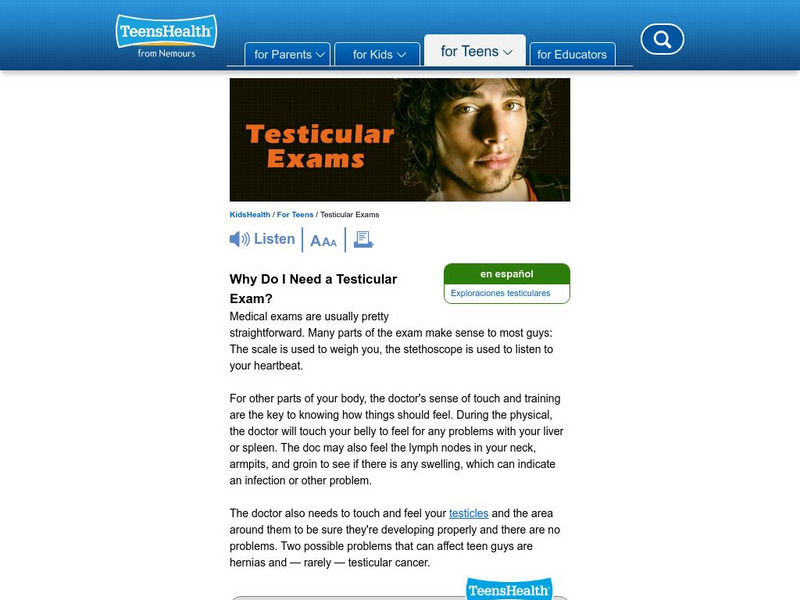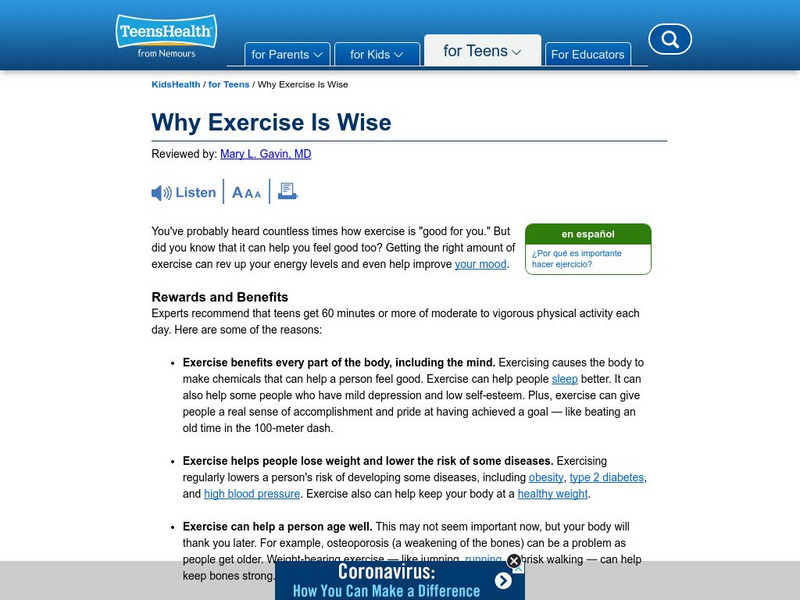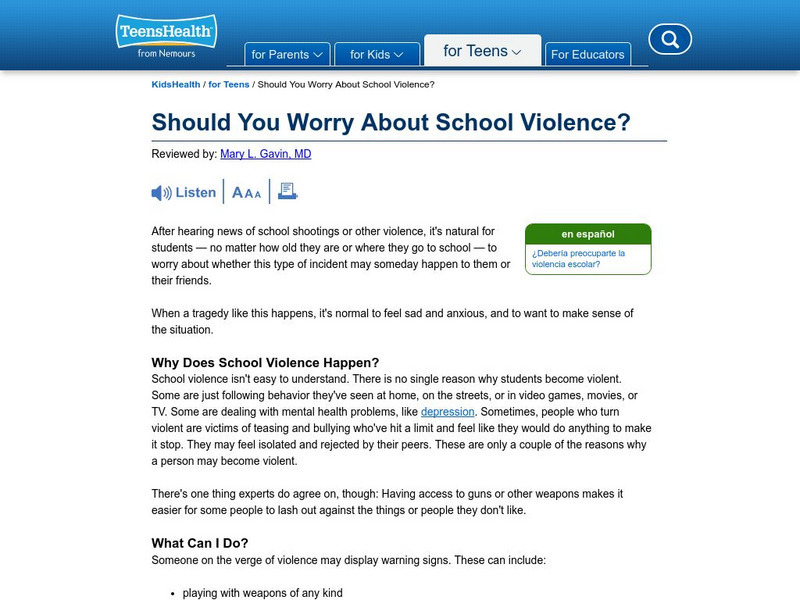Hi, what do you want to do?
Curated OER
Home Sweet Home
In this Pilgrims learning exercise, students analyze 12 pictures of common household items. Students circle all the pictures that show something that would have been found in a Pilgrim home.
Curated OER
Is Capitalism Good for the Poor?
Students have the unique opportunity to analyze actual data collected by field researchers They research to see whether holding clear title made a difference in farmers' willingness to invest in capital improvements that would increase...
Curated OER
ESL Role Playing: Going To The Doctor
In this ESL worksheet, students collaborate with one other classmate to role play going to the doctor with this dialogue. Students read their lines.
Curated OER
Cool Suits
Students examine the materials that are used to make space suits. They complete an experiment in which they test different materials in different colors to determine the best one for keeping astronauts comfortable. They analyze the data.
Curated OER
Build an Electrophoresis Chamber
Students explore electrophoresis, a technique used to isolate DNA. They assemble a gel chamber for separating mixtures. Students observe separation influenced by electric charge. They define separation through gel electrophoresis.
Curated OER
What is Child Labor?
Students examine the topic of child labor in history. They discuss jobs that children their age would have done before child labor laws. They decide on an action to take on Labor Day to share what they have learned with others.
Curated OER
America's Civil Rights Movement, Activity Four
Students investigate the concept that people died during the Civil Right;s Movement using the Matix method.
Anatomical Travelogue
Thevisual md.com: Wellness and Tracking Your Health: At Home Measurements
Gather your baseline health information using this guide to personal wellness. This presentation explains each health category you should know about yourself.
Other
Helpguide: Understand, Prevent and Resolve Life's Challenges
Professional and unbiased information for those seeking knowledge regarding a particular area of health and wellness. Modules are broken down into aging, children and family, healthy lifestyles and mental health. Comprehensive and...
National Institutes of Health
Niddk: Your Kidneys and How They Work
This resource provides a detailed description of both structure and function of the kidneys, the role they play in the urinary system, as well as provides information about kidney disease.
Federal Trade Commission
Federal Trade Commission: Consumer Information: Health and Fitness
Learn how to decode ads for products that promise to cure everything from baldness and cancer to diabetes and dementia, and for services that say they will shape you up, restore your youthful glow, and turn those abs into a well-defined...
Other
Story md.com: Wellness and Nutrition: Fats
Fats are part of a larger family of molecules known as lipids. Lipids occur naturally in your body and can also be ingested through the foods in your diet. Which fats are healthy and which should you avoid? The answer may surprise you.
Curated OER
Kids Health: Eating Well While Eating Out
The older you become the more choices you will have to make about what types of food will make up your diet. This article relates the importance of a well rounded diet. Find out more about how good food has everything to do with how you...
Other
Story md.com: Wellness and Habits
How can you stop yourself from making unhealthy decisions or acquiring bad habits? In a world of increased portions sizes and highly processed convenience foods, it isn't as simple as knowing what is and isn't good for you.
Other
Sf Gate: Health News for Your Mind and Body
This site offers links to a wealth of different articles relating to current health issues, especially in the San Francisco area.
Cold Spring Harbor Laboratory
Your Genes, Your Health: Hemophlilia
An excellent site that investigates the causes and treatments of Hemophilia, as well as the symptoms and much more.
Other
Inside the Human Body: The Respiratory System (Grades 7 12 Teacher Resources)
This teacher's resource page accompanies the student website ?Inside the Human Body: The Respiratory System? for grades seven through twelve from the Canadian Lung Association. This site walks teachers through the features of the student...
Other
Inside the Human Body: The Respiratory System (Grades 4 6 Teacher Resources)
This teacher's resource page accompanies the student website "Inside the Human Body: The Respiratory System" for grades four through six from the Canadian Lung Association. This site walks teachers through the features of the student...
CK-12 Foundation
Ck 12: Life Science: Keeping Bones and Joints Healthy
[Free Registration/Login may be required to access all resource tools.] You can help keep your bones and skeletal system healthy by eating well and getting enough exercise. Weight-bearing exercises help keep bones strong. Learn more...
Other
Academy of Nutrition and Dietetics: Ways to Help Kids Develop Healthy Habits
A study by the Academy of Nutrition and Dietetics Foundation showed parents have significant potential to influence their children's behavior. Help your children learn to make healthier food choices and engage in regular physical...
Curated OER
Kids Health: Testicular Exams
This site from Kids Health relates well to teens. Having a doctor examine your body can sometimes be an uncomfortable and intrusive experience. These procedures however are extremely important in determining ones health status. This...
Curated OER
Kids Health: Why Exercise Is Wise
Some people know that exercising is beneficial, but still find reasons why it isn't a priority. This article relates the importance of exercising and how it can improve your mind and body. Links to similar sites are provided as well.
Curated OER
Kids Health: Taking Care of Your Skin
Here you can find a 3-page article on how to keep the skin happy and healthy. Learn the best way to take care of your skin, as well as how to deal with and prevent skin problems and sun damage.
Curated OER
Kids Health: Should You Worry About School Violence?
Violence in schools can have a major effect on not only the victim but the school as a community. This article focuses on determining the safety of your school and what to do to help prevent violence. Links to related sites are available...













